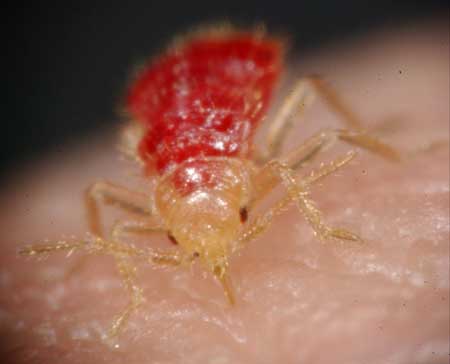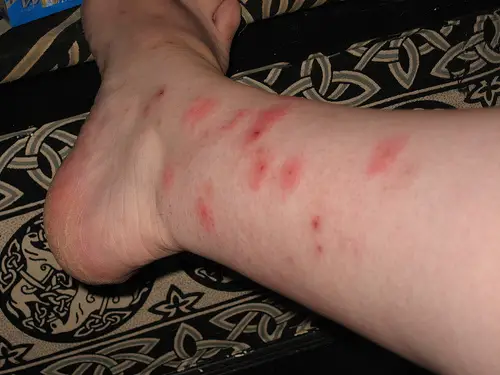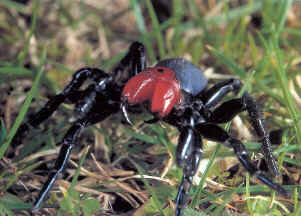Bedbug
Bedbugs are one of the most unwelcome guests in human houses as these tiny animals feed on human and other creature blood. They don’t like light, which is why they spend the day hidden in dark places, and they come out at night and attack people that are sleeping. These parasites are widespread in all parts of the world inhabited by humans.
There’s a common misconception that Bedbugs are not visible to the human eye, but it’s false as the animals are usually 5-7 mm long, which is more than enough to be seen. Their body is oval-shaped and flattened, after feeding it becomes more round. Bedbugs are usually coloured a shade of brown, becoming darker after having ingesting blood.
These small creatures live in large groups, that hide in a dark area when the sun is up. The hiding places of Bedbugs include carpets, old furniture, closets and other places where the sun doesn’t shine. At night, they start feeding, but not in a group anymore. They find a victim thanks to their sense of smell, as well as set of special thermoreceptors.
The mouth apparatus of the Bedbug is comparable to that of the mosquito or other blood sucker – the mouth itself is a pipe-like growth, made for piercing the skin and sucking in the blood. Although most of the Bedbug’s diet consists of human blood, they also attack a variety of mammals and even some birds. Humans attract Bedbugs because they exhale carbon dioxide and produce large quantities of heat, all of which the bug can sense. The Bedbug’s sting is so small that it’s almost impossible to feel it puncturing the skin, although a very irritating itch comes later. In 5-10 minutes, the Bedbug sucks in blood of a total mass five times more than the creature’s body, and after having fed, the bug returns to the hiding place and slowly digests.
In warm houses, Bedbugs can lay eggs all year round – usually one egg per day. The hatching time depends on the temperature – it can take 4 days to 3 months for the egg to hatch. The young bug looks like a miniature of the mature individuals, and immediately starts sucking blood. Before reaching full size, the Bedbug drops the skin multiple times, and if food is abundant, the Bedbug reaches sexual maturity in 3-8 weeks. Interestingly, the less food there is, the longer this creature lives – if there are no available targets, the Bedbug stays in a standstill position for multiple weeks, although in general, they live for about 18 months.
Being dependent on heat, these parasites most likely developed in warmer areas, most likely the Middle East, from where they spread all over the world by hiding in carpets, furniture and other objects. It’s logical, that there aren’t and won’t be any conservations plans for these animals, and thanks to the various insecticides and the invention of vacuum cleaners, Bedbugs are less becoming less and less common.



